One of the luminaries of sangeetha in Telugu land is among the first to be named at any mention of music. Beloved throughout southern India, his legacy cuts across caste and creed.
Background
Kshetrajna—better known to crores of Telugus as Kshetrayya, is called the emperor of Pada kavitha. This simple yet lyrical type of song would define his career and contribution to Carnatic music and Telugu culture. [1, 25]
“A composer who without a doubt upheld the integrity and notion of pada literature by assiduous understanding and application of the same is, beyond any shadow of doubt Ksetrayya (1600-1680)” [2, x]
Born as Varadaraajayya in Movva village of Krishna district, Andhra Pradesh, Kshetrajna grew up as an uneducated shepherd. As a result, this illiterate itinerant had the opportunity to do many yaathras to sacred kshetrams of his region. A yogi noticed the devotion of the boy, and initiated him into Gopala mantra. This is stated to be the reason for Kshetrayya’s brilliance in sangeeta. [1, 25]
True to this mantram, all of the padams of Kshetrayya are said to end with the tune Movva Gopala Mudra.
“Kshetrayya considered Gopala as his beloved and himself a maiden pining for his love. This sort of devotion is called Madhura bhakti, or devotional love.” [1, 26]
He is thought to have picked up this moniker Kshetrayya through his travels to different kshetras (sacred places). This bard of bhakthi is said to have visited 18-20 kshetras over his lifetime. His birthplace, Movva (meaning ‘dancing bell’) is fittingly near to iconic Kuchipudi. Movva has a 500 year old Venugopalaswami temple which became associated with this vaggeyakaara. It is said that “ in his younger days Varadayya was student of Music, literature, drama and dance and he fell in love with a devadasi Kanakangi. There are some padams which seem to reflect his love life.” [2, x]
Indeed, the influence of the devadasi on this son of a shepherd cannot be denied. At the same time, to ignore both as n outgrowth of the wider Indic tradition is also folly. The temple dancer tradition, after all, is associated with orthodox Hindu temple.
In any event, the fame of Kshetrajna soon grew. Kings of the Telugu lands of the time competed to invite him to their courts. The great composer would take residence one after another at the courts of the Madurai and Thanjavur Nayak Kings and Tana Shah of Golkonda. At the sabha of Ragunatha Nayaka, he demonstrated the true meaning of devotion:
“Seeing the appreciation Kshetrayya was getting from the king, the courtier poets got acutely jealous. They decried Kshetrayya before the king. Kshetrayya wanted the poets to get over this jealousy and played somewhat of a trick on them. He composed two thirds of a padam and asked the poets to complete it before his return and started on a pilgrimage to Rameswaram, a holy city on the south east coast of India. None of the poets could complete the padam and so finally, they had to acknowledge Kshetrayya’s superiority.” [1, 26]
Few details are available today on the life of Kshetrayya, but his legacy cannot be denied. The impact of Kshetrajna can be detected throughout the south.
“Kshetrayya’s padams possess a beautiful style. They contain a lot of poetic embellishments like similes, metaphors and hyperboles and native idioms. In his padams Kshetrayya gives equal importance to music and poetry and they can all be set to dance.” [1, 27]
Achievements
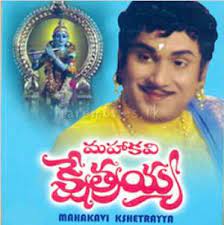 Credited with 4,000 padams
Credited with 4,000 padams- Legend has it that he composed 1100 padams in 4 days
- Famous compositions: Ramarama in Bhairavi, Gaddari in Kalyani, Yemandu namma in Kedaragowla, and Kontegadu in Surati. [5]
One of the composers most associated with the Padam form today is Kshetrajna. Indeed, the essential achievement of his life was the imprint he made on this form in the Telugu raashtras. Despite the prolific production of poesy, very few of his original works have come down to us.
As a result, to properly understand the height of his achievements necessitates understanding the depth of this literary form.
The Padam
Contrary to modern Indologists and western Telugu ‘scholars’, Sangeeta and Kavya in Andhra desa was very much a product of the Saastriya Tradition. Whether Classical Music or Poetics, marga is very much the mother of desi.
“Of all the terms, Padam, Krti, Kirtana, Samkirtana, the oldest is Padam and the earliest treatise to have defined it is Bharata’s Natyasastra” [2, vii]
“Bharata in his Natyasastra defines Padam as:
Gaandharvam yan mayaa proktam svara taala padaatmakam
Padam tasya bhaved vastu svara taalanu bhavakam
Yat kincidakshara krita tat sarwam pada sanjnitam
Nibaddham ca anibaddham ca tat padam swividham smrtam
Gandharva comprises of svara taala and padam.
In this, padam is evocative of svara and taala.
Any meaningful syllabic composition can be called a padam.
It is of two kinds, Nibaddha (bound) and Anibaddha (unbound)
It can also be with taala or without taala. (NS XXXII, 25-27)” [2, vii]
Padam, therefore, is an ancient literary and musical form. The separation of Saastriya Sangeeta into Hindustani and Carnatic is of recent nature. The Classical Indic structure of the two traditions remains essentially the same.
“Ancient treatises mention 6 components of a Prabandha; viz Swaram, Birudam, Padam, Tenakam, Patam and Taalam. That which deals with the description is called a Padam.” [2, viii]
No stranger to poesy, the padam is mentioned by even the Sanskrit poetic greats of antiquity— Kalidasa, another rustic villager turned classical composer, first among them.
“Kalidasa in one of the slokas in Meghaduta says…
‘Madgotramkam Virallvita Padam Geya Mudgatu Kama’
The heroine sends a song, a padam describing the gotram, name, etc of the hero, which clearly indicates that in the ancient times, the entire song could be referred to as a padam.” [2, viii]
Jayadeva’s Ashtapadi literally unpacks as Ashtaanaam Padaanam Samaahaara, meaning a “lyric with 8 charanams“. So what exactly then is a padam? Decorated scholar and literateur Pappu Venugopala Rao gaaru defines as follows:
“A Padam, is therefore a line/paadam, a stanza, or a full composition that is its literary meaning. Padakavita Pitamaha, Annamacharya (1408-1503) composed about 32,000 padams of which 14,328 are available to us today. He authored a treatise or hymnody called Samkeertana Lakshanam in Sanskrit. The original work is unfortunately not available but its faithful Telugu translation bearing the same title by his grandson Chinna Tirumalacharya is available.” [2, viii-ix]
Annamayya is, of course, among the tallest of our musical exemplars. His scholarly achievements further illuminate the nature of the padam.
“This book Samkeertana Lakshanam describes the differences between nibaddha and anibaddha padas. It also defines (for the first time catalogued) Pallavi as the first line/lines of a song and charanam as the stanza. If the charanam has four lines, then a pallavi has two.” “The idea, mood and spirit in the Pallavi alone must be expanded in the stanzas. It should contain the signature or mudra of the composer at the end.”[2, ix]
The padams of Kshetrajna come down to us today with many such a mudra.
Compositions
The compositions of this Andhra Personality evoke both bhakthi and controversy. He is frequently translated in rough, over-eroticised English. Whether this is done purposefully or not, he remains representative of a school of spiritual Sringara and composed accordingly. Here is a sample of Kshetrayya’s Padams.
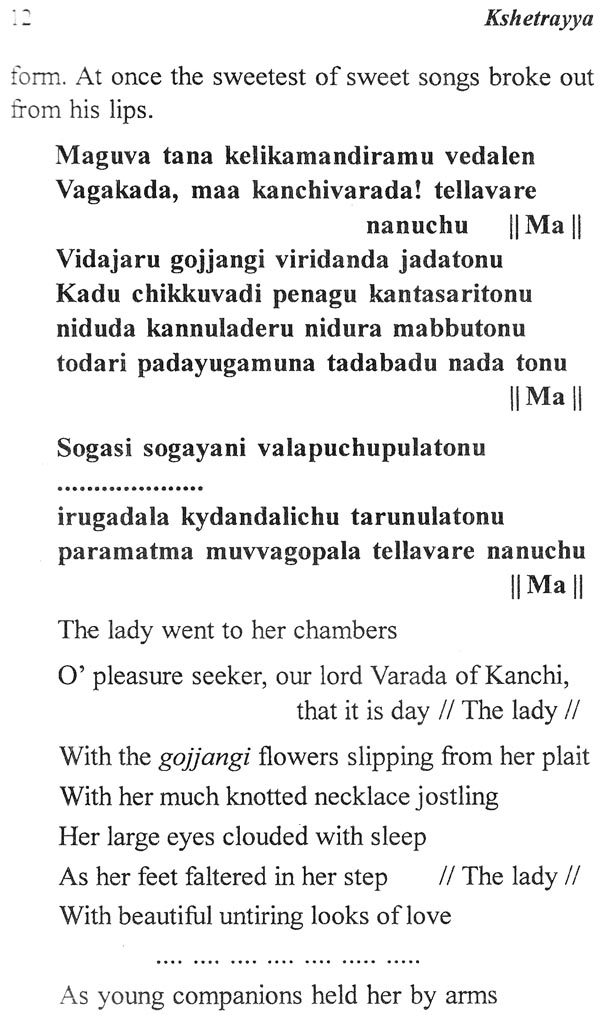
“While handling delicate and sensitive emotions of sorrow, and its different shades, Ksetrayya employed Mukhari, Ghanta, Nadanamakriya, Punnagavarali, Kambhoji, etc. We find a sculptor in Ksetrayya if we observe his compositions, in ragas like Ahiri, Ghanta, Saindhavi, Navaorku, etc.” [2, xi]
As Venugopala Rao further opines:
“The padams of Ksetrayya reflect a master craftsman’s genius, his exquisite poetic talent, extraordinary prosody, proficiency, unparalleled knowledge of Alankara sastra and great knowledge of different branches of arts and science.” [2, x]
Legacy
The word kshetrajna literally means ‘knower of the field‘. Its spiritual connotations redound all-the-more-so with respect to a de facto spiritual figure.
Andhra as usual does little to recognise its cultural doyens. Despite this, the average Telugu respects the “great 17th century composer Kshetrayya whose exquisite compositions — known as padams – are a treasured part of the repertoires of Kuchipudi, Bharatanatyam and Carnatic music. [3]
Nevertheless, Muvva Venugopala Swami Temple in Varadayya’s native town, commemorates his legacy to this day.
“One wall of this temple sports the words of four Kshetrayya padams — Yentha Chakkanivaade Na Swami, Avunamma Meekemi, Rammanave Samukhaana Rayabaaramulele, and Apuroopa Darsnambaayegada Nedu. Beside the temple are a Kshetrayya Kalyana Mandapam and a Kshetrayya Pada Paathasala, both fronted by a lifesize statue of Kshetrayya.” [3]
There is a festival (Kalyanothsavam) in the same place that also honours him. Though Telugu University had a course for him in 2008, youth interest continues to lag on account of parental disinterest in cultural education. Movva itself is a stone’s throw from the dance village of Kuchipudi, birthplace of Siddhendra Yogi, as well as Kaja, the birthplace of Narayana Teertha. [3]
The Telugu Film Industry, as usual, remains the prime purveyor of what passes for high culture in Samskruthi-starved Telugu states. As a result, the film Mahakavi Kshetrayya can take its place in the canon of Telugu cinema proper.
Regardless, to safeguard the legacy of Kshetrajna, it is imperative that parents themselves begin to ensure, with or without Telugu medium, that Telugu culture and music should remain a must.
Click here to Buy this Book!!!
References:
- Ravinuthala, Sreeramulu. Great Saints of South India. New Delhi: Richa Prakashan. 2006
- Pappu, Venugopala Rao. Fragrance of Padams. Chennai: Pappus Academic & Cultural Trust. 2015
- “A trip to Kshetrayya’s Movva”. The Hindu. https://www.thehindu.com/features/friday-review/history-and-culture/a-trip-to-kshetrayyas-movva/article4316219.ece
- Rao, Visvesvara. Kshetrayya. TTD. Tirupati. 2017
- “Kshetrajna”. Karnatik.com. https://test.karnatik.com/co1111.shtml
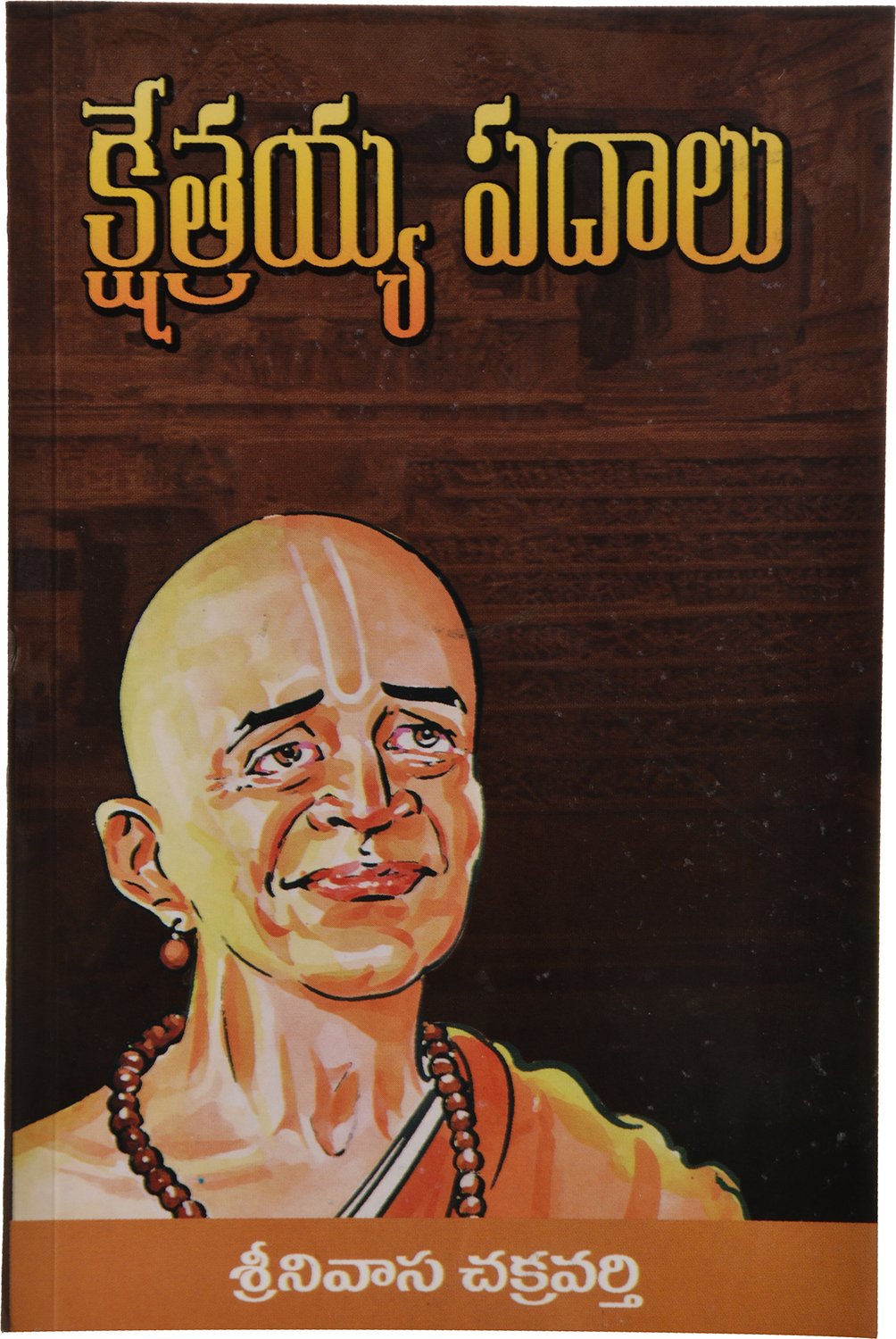
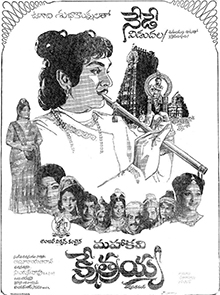

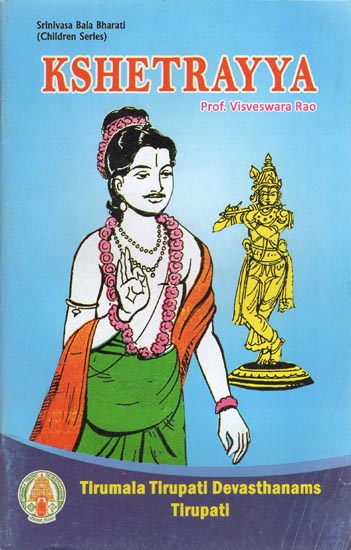
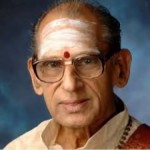

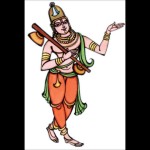



YESTERDAY’S LITERATURE IS TODAY’S GUIDING LIGHT.